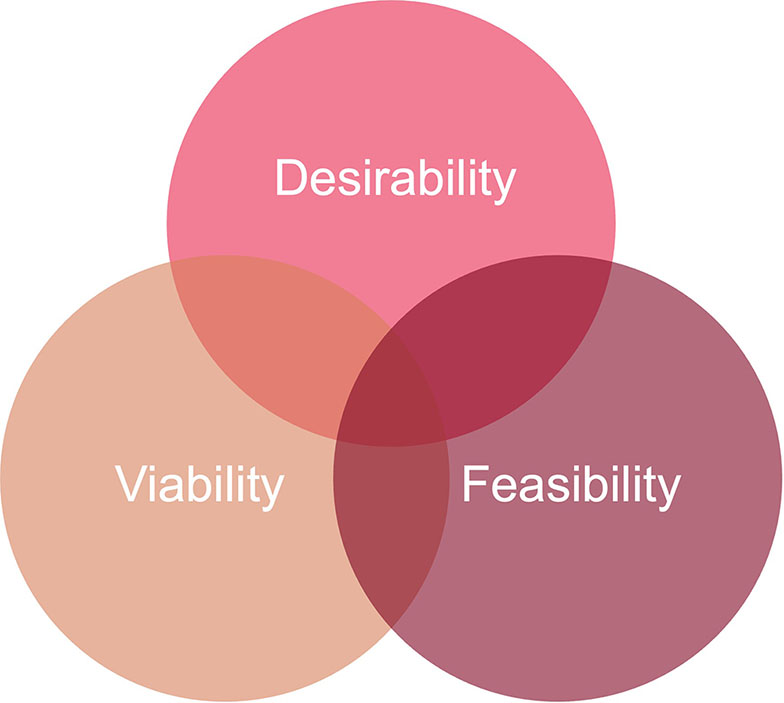A number of steps are required for an idea developed at the university to find its way into implementation. The university supports innovators in all phases of the innovation and translation process.

Making ideas fly
A visionary idea alone is not enough. Acceptance in society and economic sustainability are decisive factors.
Since the turn of the millennium, the concept of design thinking has also been increasingly applied to the development of business models. Based on this, three core criteria should be considered to assess the (expected) success of an innovation, to check the feasibility of an idea and to bring it to maturity.
Based on the DFV framework by IDEO, these are:
(graphic is clickable)

Desirability
This parameter focuses on people and their needs. How desirable is your idea, social innovation, service or product for potential users and what value proposition do you fulfill for them? Who would be your "customers" and which market would be interested? It is about understanding what people want and what problems need to be solved.
Feasibility
Feasibility is about the technical feasibility of the idea (proof of concept). This criterion assesses whether the resources to develop a product or service are at hand. Is the technology needed to implement the idea available or can it be developed? Are there potential technical challenges that could jeopardize the implementation of the idea? What legal, regulatory or market-related obstacles could influence the realization?
Viability
The viability factor refers to the financial sustainability and market potential of an idea. It ensures that the product or service can be economically successful in the long term. This includes the development of a viable business model that generates income and covers costs. Viability ensures that the idea is not only technically feasible and desirable, but also financially sustainable. This applies not only to profit-oriented companies, but also to non-profit organizations.
